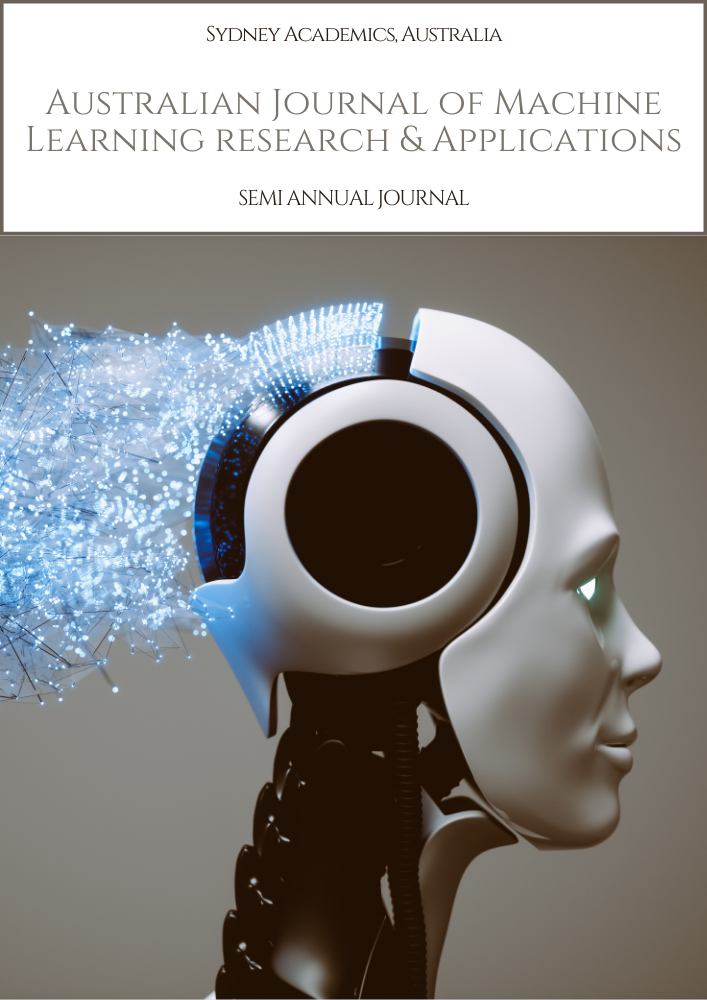Data Lakehouses: Merging Real-Time Analytics and Big Data Processing
Keywords:
Data lakehouse, real-time data processingAbstract
Data lakehouses are transforming how organizations manage and analyze data by merging the scalability and flexibility of data lakes with the performance and reliability of data warehouses. Traditional data lakes are cost-effective and can store vast amounts of raw, unstructured data but often fail to improve the performance, consistency, and governance required for complex analytics. Conversely, data warehouses excel at handling structured data, enabling fast queries and robust data management, but they need help with diverse data types, which comes with higher costs. The lakehouse architecture bridges these gaps by combining the strengths of both systems, creating a unified platform that supports structured, semi-structured, and unstructured data while maintaining high performance & consistency. This architecture eliminates the silos between data storage and analytics, allowing businesses to conduct real-time analytics and big data processing on the same platform. It simplifies data workflows, enhances collaboration, and supports diverse use cases, from business intelligence to machine learning and predictive analytics. Lakehouses reduce costs and increase efficiency by enabling organizations to harness the full value of their data without duplication or complex integration. However, adopting this innovative approach comes with challenges, such as ensuring compatibility with existing tools, managing infrastructure costs, & addressing security & compliance concerns. Despite these hurdles, the lakehouse model represents a significant advancement in data architecture, enabling faster insights and better decision-making. With its ability to support real-time processing, lakehouses are reshaping industries by enabling rapid responses to market trends and customer needs. As businesses increasingly prioritize agility and data-driven strategies, the lakehouse is becoming a cornerstone of modern data management, offering a scalable, efficient, and versatile solution for organizations of all sizes.
Downloads
References
Manchana, R. (2023). Building a Modern Data Foundation in the Cloud: Data Lakes and Data Lakehouses as Key Enablers. J Artif Intell Mach Learn & Data Sci, 1(1), 1098-1108.
Gade, K. R. (2022). Data Lakehouses: Combining the Best of Data Lakes and Data Warehouses. Journal of Computational Innovation, 2(1).
Shiyal, B. (2021). Modern data warehouses and data lakehouses. In Beginning Azure Synapse Analytics: Transition from Data Warehouse to Data Lakehouse (pp. 21-48). Berkeley, CA: Apress.
Vemulapalli, G. (2023). Optimizing Analytics: Integrating Data Warehouses and Lakes for Accelerated Workflows. International Scientific Journal for Research, 5(5), 1-27.
Janssen, N. E. (2022). The Evolution of Data Storage Architectures: Examining the Value of the Data Lakehouse (Master's thesis, University of Twente).
Oreščanin, D., & Hlupić, T. (2021, September). Data lakehouse-a novel step in analytics architecture. In 2021 44th International Convention on Information, Communication and Electronic Technology (MIPRO) (pp. 1242-1246). IEEE.
Harby, A. A., & Zulkernine, F. (2022, December). From data warehouse to lakehouse: A comparative review. In 2022 IEEE International Conference on Big Data (Big Data) (pp. 389-395). IEEE.
Lekkala, C. (2020). Building Resilient Big Data Pipelines with Delta Lake for Improved Data Governance. European Journal of Advances in Engineering and Technology, 7(12), 101-106.
Armbrust, M., Das, T., Sun, L., Yavuz, B., Zhu, S., Murthy, M., ... & Zaharia, M. (2020). Delta lake: high-performance ACID table storage over cloud object stores. Proceedings of the VLDB Endowment, 13(12), 3411-3424.
Damji, J. S., Wenig, B., Das, T., & Lee, D. (2020). Learning Spark. " O'Reilly Media, Inc.".
Chaudhry, Z. J., & Fox, K. L. (2020, September). Artificial Intelligence Applicability to Air Traffic Management Network Operations. In 2020 Integrated Communications Navigation and Surveillance Conference (ICNS) (pp. 5A1-1). IEEE.
Mitra, M., & Roy, S. (2019). Code & Coin: Financial Analytics powered by AIML. Libertatem Media Private Limited.
Çolak, S., Alexander, L. P., Alvim, B. G., Mehndiratta, S. R., & González, M. C. (2015). Analyzing cell phone location data for urban travel: current methods, limitations, and opportunities. Transportation Research Record, 2526(1), 126-135.
Hochheiser, H., & Shneiderman, B. (2004). Dynamic query tools for time series data sets: timebox widgets for interactive exploration. Information Visualization, 3(1), 1-18.
Munasinghe, L., Peter, P. L. S., & Perera, T. D. S. (2003). Growth prospects for the software industry in Sri Lanka and an appropriate policy framework.
Thumburu, S. K. R. (2023). Leveraging AI for Predictive Maintenance in EDI Networks: A Case Study. Innovative Engineering Sciences Journal, 3(1).
Thumburu, S. K. R. (2023). EDI and API Integration: A Case Study in Healthcare, Retail, and Automotive. Innovative Engineering Sciences Journal, 3(1).
Gade, K. R. (2024). Beyond Data Quality: Building a Culture of Data Trust. Journal of Computing and Information Technology, 4(1).
Gade, K. R. (2023). Data Lineage: Tracing Data's Journey from Source to Insight. MZ Computing Journal, 4(2).
Katari, A., & Rodwal, A. NEXT-GENERATION ETL IN FINTECH: LEVERAGING AI AND ML FOR INTELLIGENT DATA TRANSFORMATION.
Katari, A. Case Studies of Data Mesh Adoption in Fintech: Lessons Learned-Present Case Studies of Financial Institutions.
Komandla, V. Crafting a Clear Path: Utilizing Tools and Software for Effective Roadmap Visualization.
Thumburu, S. K. R. (2022). A Framework for Seamless EDI Migrations to the Cloud: Best Practices and Challenges. Innovative Engineering Sciences Journal, 2(1).
Gade, K. R. (2022). Data Analytics: Data Fabric Architecture and Its Benefits for Data Management. MZ Computing Journal, 3(2).
Thumburu, S. K. R. (2022). AI-Powered EDI Migration Tools: A Review. Innovative Computer Sciences Journal, 8(1).


